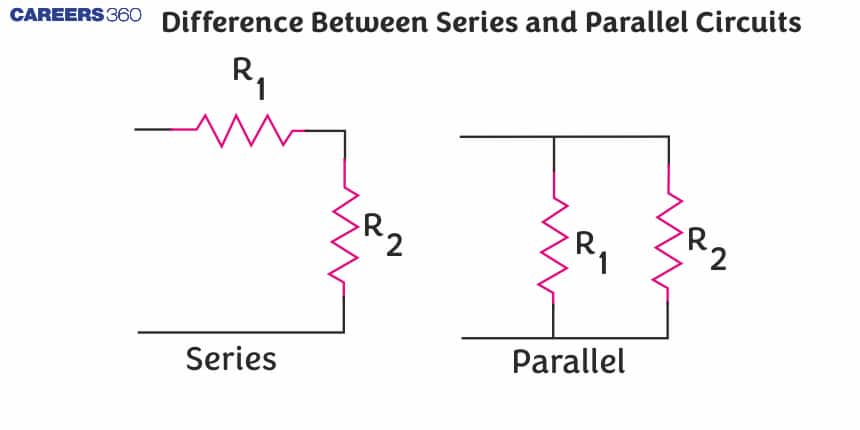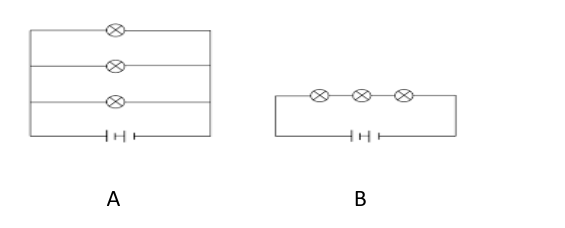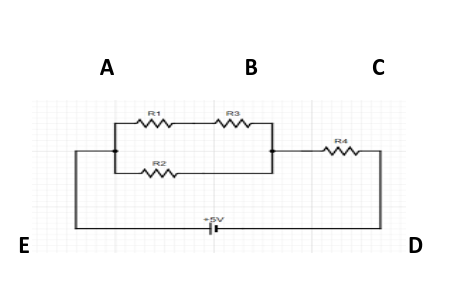Difference Between Series and Parallel Circuits - A Complete Guide
Introduction
In this chapter, we will study in depth the difference between series and parallel circuit, series connection, series connection diagram. We will also study parallel circuits and compare series and parallel circuits. Later on, we will try to understand series parallel circuits and study about series and parallel connection. In the Last we will study resonance and relate it with Series and Parallel circuits.
This Story also Contains
- What is a Series Circuit?
- What is a Parallel Circuit?
- Write the difference between series connection and parallel connection :

What is a Series Circuit?
We have broadly classified the arrangement of electrical network having two endpoints into two parts, namely:
Series Connection
Parallel Connection
Also read -
- NCERT Solutions for Class 11 Physics
- NCERT Solutions for Class 12 Physics
- NCERT Solutions for All Subjects
Electric Circuit
An Electric Circuit is a path for transmitting Electric Current comprising battery(source of current),device that uses current( electric bulb, lamp).
Series Connection
In the series combination, each circuit component is arranged in series. In Series connection, there is only one direction in which current flows, thus opening or breaking of any part in the circuit leads to the failure of the flow of current.
Properties
- In series combination, the same current flows through each component of the circuit, hence the magnitude of current remains the same across the ends of the circuit.
Or, numerically it is given as
I=i(1)=i(2)=i(3)=i(4)……………..
- But, the voltage across the circuit is the sum of the individual voltage drop across each component of the circuit.
Or, numerically it is given as
V= v(1)+v(2)+v(3)+v(4)……………….
Related Topics Link, |
What is a Parallel Circuit?
In a parallel circuit, two or more electrical components are arranged parallel to each other. In this combination, unlike the series combination, there is more than one direction in which current flows.
Properties
- Potential difference across the components of the circuit remains the same.
V=v(1)=v(2)=v(3)=v(4)…………
- Magnitude of current is equal to the total sum of current across the electric circuit.
I=i(1)+i(2)+i(3)+i(4)+……………..
Series and parallel circuit diagram:

In this diagram, the connection parallel and the series circuit is shown as A and B respectively.
Also read :
Write the difference between series connection and parallel connection :
In the above figure, A represents a parallel connection diagram. In the Figure, we can clearly see all three Resistors are placed parallel to each other and the voltage source is also placed parallel to that combination. Hence there is a different path for the flow of the current and thus there will be the distribution of the current along each path.
While Looking at Figure (B), we can clearly see all the resistors are placed in sequential order thus forming the same path for the flow of the current leading to the same current flow through each resistor.
Series Parallel Circuit

Till now we have studied series and parallel as two different combinations but can we combine these two combinations as a single arrangement?
Yes, the answer to that is that we can arrange both these combinations as a single arrangement.
NOTE: This is valid till the loop formed is always closed.
In the above diagram, we can clearly see two different paths for which current can take
NCERT Physics Notes :
Arrangement:
- Series Combination of R(1) and R(2) with a parallel combination of R(3).
- Combination or Resultant of R(1), R(2), R(3)in series with R(4).
Resonance
Resonance is an electrical phenomenon, occurring if capacitors and inductors are present in the electric circuit. Resonance happens when the capacitive impedance is equal to inductive impedance. There is a difference in the arrangement of capacitors and inductors in series and parallel circuit
- In series, both capacitors and inductors are arranged in series
- While, in parallel circuit capacitors and inductor is placed parallel to each other.
Variation in result:
- Series resonance occurs when the impedance formed is Minimum
- Parallel resonance occurs when the impedance formed is Maximum
Voltage in Series and Parallel circuit
- In series connection voltage across the circuit changes.It is the sum of the individual voltage across the components of the circuit.
- While in a parallel circuit, voltage across different components placed in the different loop of the circuit remains the same. It does not change.
Power in Series and Parallel
- Power in series gets distributed across resistors, hence total Power in a series circuit is equal to the sum of individual power across each resistor.
- Since we know that voltage across resistors in parallel circuit is equal,so the power dissipated in the parallel circuit is given by the formula :
P= (Electric current)square(Electric Resistance)
Also check-
Frequently Asked Questions (FAQs)
As we know in Series combination net resultant is equal to the sum of all individual resistance
So, on adding we get R(net)=7 Ω, ,which is greater than 1
Hence, it must be a parallel combination.
Series circuits are used in low power circuits and voltage divider circuits.
In series circuits, there is end to end connection of components and in parallel circuits, the components are connected across each other.
In a series circuit, the voltage is divided because the supply voltage is shared between the components present in the circuit.
No, current is divided in a parallel circuit as the charges split into different branches.
As we know in Series combination net resultant is equal to the sum of all individual resistance
So, on adding we get R(net)=7 Ω, ,which is greater than 1
Hence, it must be a parallel combination.
Series circuits are used in low power circuits and voltage divider circuits.
In series circuits, there is end to end connection of components and in parallel circuits, the components are connected across each other.
In a series circuit, the voltage is divided because the supply voltage is shared between the components present in the circuit.
No, current is divided in a parallel circuit as the charges split into different branches.